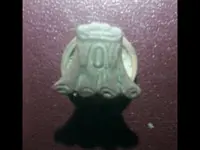Fascinating. Do continue.
**I Accidentally Left The "r" Out Of The gren Of The Marker I See...HA! Luckily it wasn't me carving it!
Dirt... You're Right...It is really fascinating the different ways folks left messages and clues.
This particular one was put there by a large number of relatives who had to leave their homes and the area during the war and they never did come back and since it wasn't a Swedish community it wasn't easily apparent to anyone what it really was saying ... Hidden in plain sight. It was made and left that way for whichever of them returned. None did, so there it remained.
Afterwards when I researched this I found out they had all worked in the Coal Mines back East...Scots-Irish... but they had worked with Swedish guys among other ethnic groups which is how they learned the language and names. When all the Railroad projects started back east it's astronomical the amount of different ethnicities who worked together and lived in close proximity to each other and like at the coal mines they learned others languages and customs. Women and children too of course.
There are a lot of these similar type of markers... not always Grave Stones... I've seen them on Lane Pillars and Rock Foundations of homes, Churches, cold storage buildings, fireplace stones, steps, boulders on properties... pretty much anything that folks didn't think could or would be stolen, burned or completely destroyed. Fake Grave Stones are what was primarily used though from my experience.
**If anyone would happen to find one of these directing you to or from an old cold storage building/foundation, cellar or icehouse... make sure and have gators on and watch for snakes... sawdust was used for insulation in walls and floors and it's an attractant for snakes and other unwanted visitors unless it's cedar. It was also a great deterrent to keep trespassers away from these structures when they were vacated for any length of time. I know of one really old cold storage building with a rock foundation and wooden walls and floors with sawdust insulation that although it's leaning pretty good, it's still standing and it's Full of snakes. I won't go in it. No Way.
I posted a pic either on this thread or the most recent thread by Baker of a Fake Grave that had been utilized by more than one person over the years and I still have the hibiscus that was planted on the plot by using starts of it as have others in my family. The photo shows the way the ground just collapsed over time.
This way of hiding clues isn't limited to just before, during or just after the civil war. It's been used for a very long time and during prohibition was Widely used... also before and during all wars and events where most of the able bodied men were gone for long periods especially in rural areas... and when they returned if they brought back valuables. Also..dates to look for where people hid things a lot are during the influenza pandemic... folks were afraid they would all die and left markers for any family that would come later. I'm just saying that so searches aren't limited to just the Civil War Era. I've found them up to 1929...I'd bet there's later ones also. I've got a 1909 dated fake marker in my yard. The earliest I've found is a birth year carved in the fake marker with a woman's name from the 1700's and that was in a family plot.
Just because dates are on a fake marker it doesn't always make them accurate.. if the actual year was 1918....nobody would put 1919 on it, but you could put anything prior to 1918 on it if the numbers were part of the message..
A good way to learn about any area you're interested in hunting this way is to find out who had the mills, who was the blacksmith, the stonemason if there was one local... who dug the wells if there was a well digger close, the banker...Who made the moonshine, who owned the store and livery. Anyone who dealt regularly in money or bartered valuables for services or could of had a large number of kin around. Find out their ethnic and religious backgrounds. Then start looking around, these fake markers could be in timber or off old trails... anywhere really. It's been my experience that they've been in areas that wouldn't flood just like real ones and there could be one...two or even more together. Take pics or write down exactly what they say for your translation app.
I say research religious backgrounds because if for instance you were Catholic and had moved to a predominantly Protestant area that was small, many times families hid the fact they were Catholic and would attend the local Protestant Church never telling outsiders they were Catholic so they could blend in better with locals. They still were practicing Catholics in their homes though. There are many different Bibles in many languages that were brought to this country and those words and/or names were often used on markers. Buy them at sales.
I posted about this before but Braille was also used to leave clues and messages in my neck of the woods anyway... Well from parts of Virginia, WV, Alabama, Arkansas, Oklahoma and in parts of Nebraska too that I know for sure by using holes... obviously it isn't raised dots like Braille writing unless it was on paper but the holes were done in the same writing symbolism. Most people didn't know Braille and many still don't....There wasn't anyone blind in my family but it was used and can be found on anything from stones to deadfall. It's just another covert way used to leave a message. On wood it usually looks like a woodpecker or wood worms were there. Stone markers holed can be any size from what I've seen. I keep the Braille alphabet and numbers on my phone also. From what I've seen on any marker more often than not the clue or message is on Stone and Not Wood, including trees due to the potential of fire or logging.
The holes that you might see in rocks.. those could also be drill or hammered holes depending on if there is a pattern. I've seen those used on really wide boulders and rock flats as crude eye levels for surveying type stuff. You'll see different depths of the holes. If a square hole is found, it's probably modern from what and where I've seen them...there's folks that believe the holes were put there to determine measurements to get to other clues or to a treasure... that could be true in some instances also. I don't personally know.
I hope what I've added helps...
If there's any questions, just ask...I'll share whatever I can.
Kace
Here's a pic of the 1909 fake markers death date that I have in my yard. The marker itself is the size of a real single flat headstone. The Sodergren marker is the standing slab type.
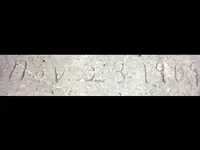





 Thanks!
Thanks!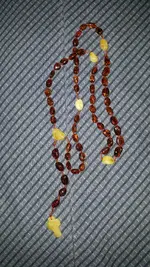
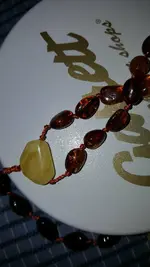
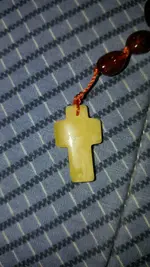

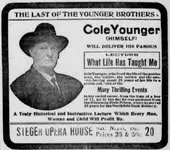
 Pretty Cool Find.
Pretty Cool Find. 